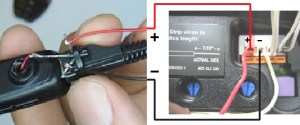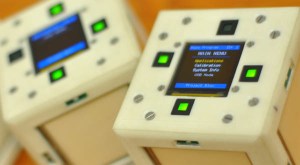[Richard] has been working on the concept of “incorporating more feeling into our digital objects”. His design is still just a concept but hopefully someone will take up the idea because we think the results would be amazing. The attention to detail in the design is impressive, the Rotary Mechanical Smartphone as he is calling it contains a generic smartphone maintaining all the features such as the touch screen, but also including a set of interchangeable rotary dials on the back. There is the true rotary dial just like an old phone and a push button dial, for complete integration of the old and new technologies.
Once the design was complete, Richard built himself a proof of concept model to show off his work. The shell was 3D printed and copper plated to get the desired steampunk finish. The rotary dials are made from brass plate and hand finished. [Richard] has put in a lot of effort getting the finish right with electroplating, painting, and sanding. The final results are nothing short of impressive. Check out his site for some very nice photos and build details.

















